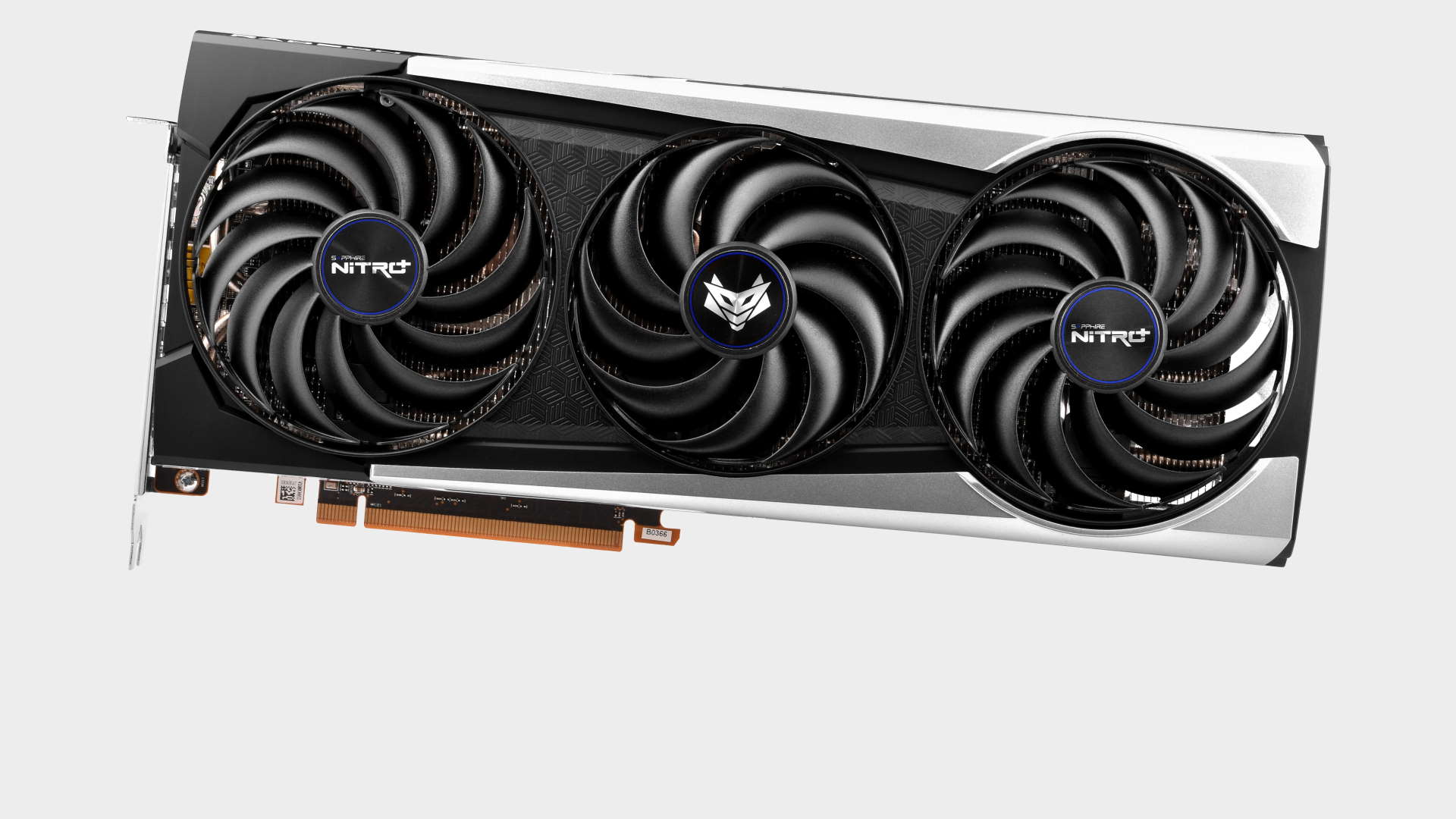Our Verdict
The Sapphire 6700 XT Nitro+ is potentially a mid-range champion, but not at these prices.
For
- Highly effective cooler
- 12GB RAM
- Energy efficiency
Against
- It’s too expensive
- The 3060 Ti is tough competition
PC Gamer's got your back
Say a warm 'hello' to the Sapphire Nitro+ Radeon RX 6700 XT Nitro+, but be quick because it's unlikely to be around for long. Like every other GPU right now, availability is scarce and pricing is vastly inflated. These woes aren’t unique to this card, so let’s not dwell too much on the market and instead look at how the Sapphire compares to other cards in its class. In six months, hopefully all these market shenanigans and forum discussions will be relegated to the ‘remember when’ category.
The Sapphire Nitro+ Radeon RX 6700 XT, along with all AMD Radeon RX 6700 XT cards, makes use of the new Navi 22 GPU. It contains 2,560 RDNA2 based shader cores with 96MB if Infinity Cache, plus a 192-bit memory bus that connects to 12GB of GDDR6 memory.
That’s a narrow bus for a card in this price range, but AMD claims that the large cache minimises this disadvantage. To be fair, that's exactly what's happened with all the other RDNA 2 GPUs we've seen. The RDNA2 architecture and 7nm process are shown off in all their glory with the Sapphire running at stunning 2,622MHz boost clock. AMD has done a fantastic job optimising its architecture to allow clock speeds at these levels without resorting to brute force, and borderline crazy power consumption.
Despite the relatively tame (by modern standards) 230W TDP of the Navi 22 GPU, the Sapphire Nitro+ makes use of a large 2.5 slot triple fan cooler. There’s a large cut out on the rear of the card to allow air to pass through it, a trend that is becoming more apparent in modern shrouds. It comes equipped with three DisplayPort connections, plus a single HDMI 2.1 port.
If you like a bit of RGB bling, the Sapphire Nitro+ has you covered, with a nice-looking light bar and Sapphire logo across the top of the card, joined by a logo on the back plate. We noted that our particular card was good at producing orange. Some RGB products really struggle to show an accurate orange. Okay, that’s hardly a top selling point, but... Orange!
GPU: Navi 22
Lithography: TSMC 7nm
Die size: 336 mm2
Transistors: 17.2bn
Stream processors: 2,560
CUs: 40
Ray Accelerators: 40
GPU Game clock: 2,548MHz
GPU Boost clock: 2,622MHz
Memory bus: 192-bit
Memory capacity: 12GB GDDR6
Memory speed: 16Gbps
Memory bandwidth: 512GB/s
TGP: 230W
Price (reference): $579
The PCB is surprisingly compact compared to the cooler. The nine phase design is powered by six- and eight-pin power connectors, providing up to 300W of power delivery. There’s also dual BIOS, though the clocks are the same with both. Sapphire says the quiet BIOS lowers the fan speed a touch, though honestly, we couldn’t tell the difference between them. Maybe on a 350W card this would have some more practical use.
There’s a third setting that lets you switch between them using Sapphire’s Trixx software app. Additionally there’s an ARGB header than allows you to sync other RGB devices with the card.
Sapphire has done a great job with its cooler. We saw a load temperature of just 64°C, which is outstanding for a 230W TDP card. The design is aggressive and the metal back plate gives off an '80s sci-fi vibe. In addition to the main cooler, Sapphire adds a separate secondary heat sink to cool the memory. It has a large surface area thanks to its finned design and it’s a thoughtful and highly effective design.
So how does it perform? Honestly, AMD was a little rosy with its pre-launch predictions. We see the card trailing the Nvidia GeForce RTX 3070 but competitive with the GeForce RTX 3060 Ti. And the Sapphire card’s clocks aren’t enough of an increase over the reference card to make a meaningful difference in frame rates.
1080p gaming performance
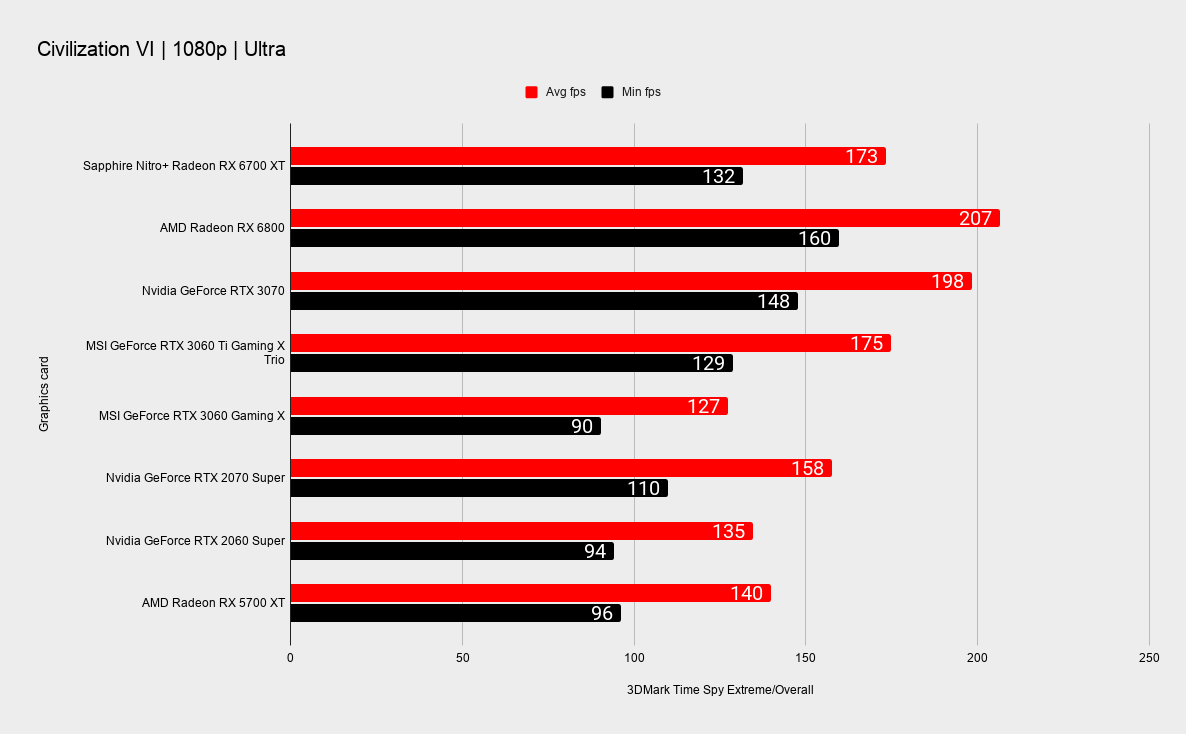
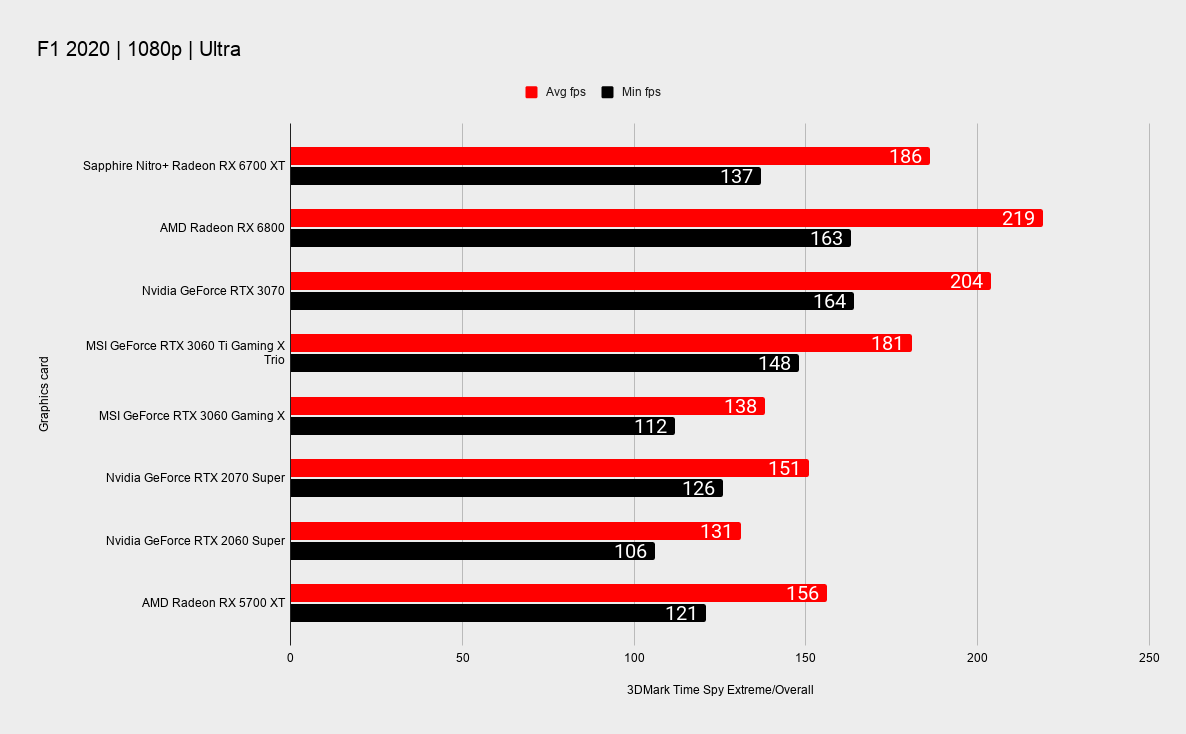
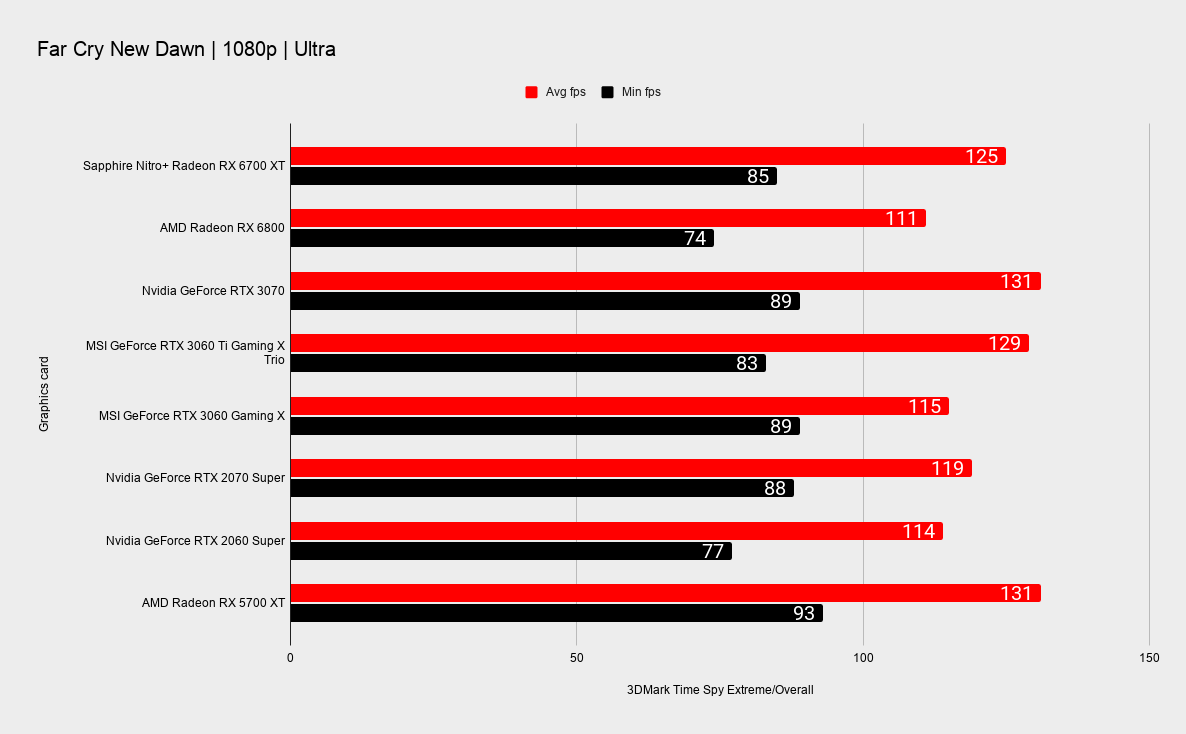
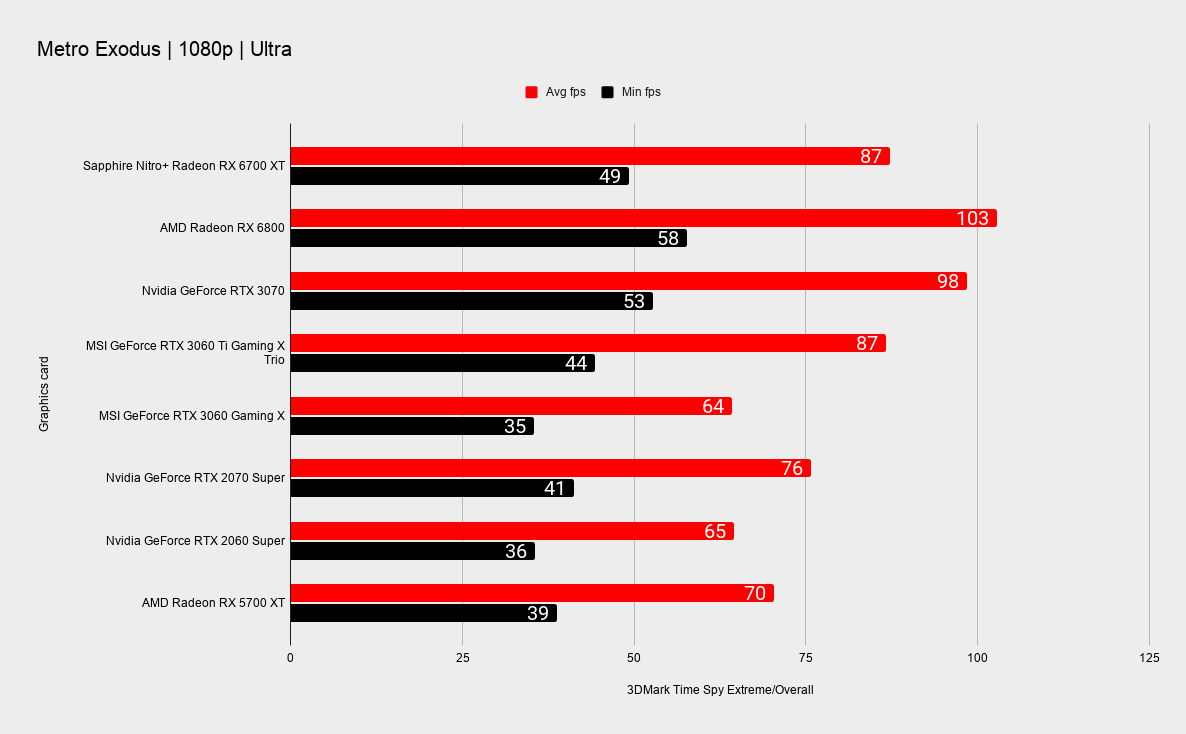
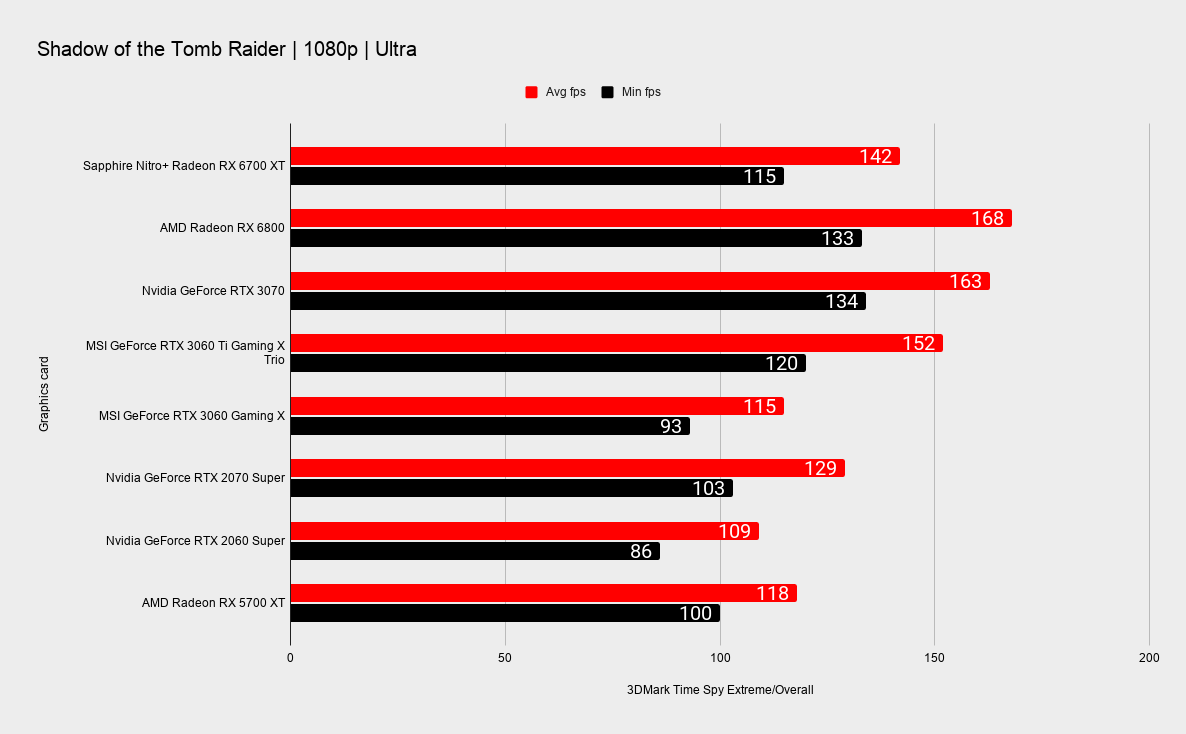
It will, however, run any game at 1440p and smash out the frames at 1080p when driving a high refresh rate monitor. The Nitro+ RX 6700 XT , and all other RX 6700 XT cards for that matter lag noticeably in ray tracing performance and we’ll have to wait a little longer to see AMD’s equivalent DLSS implementation.
1440p gaming performance
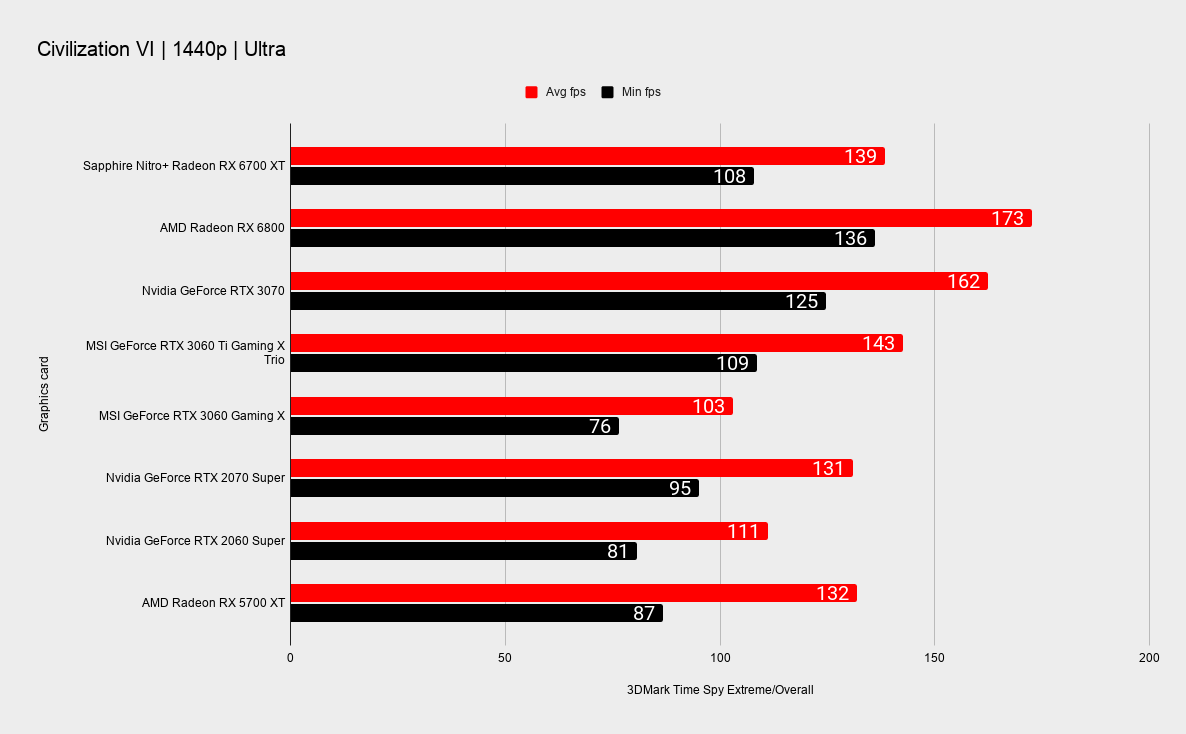
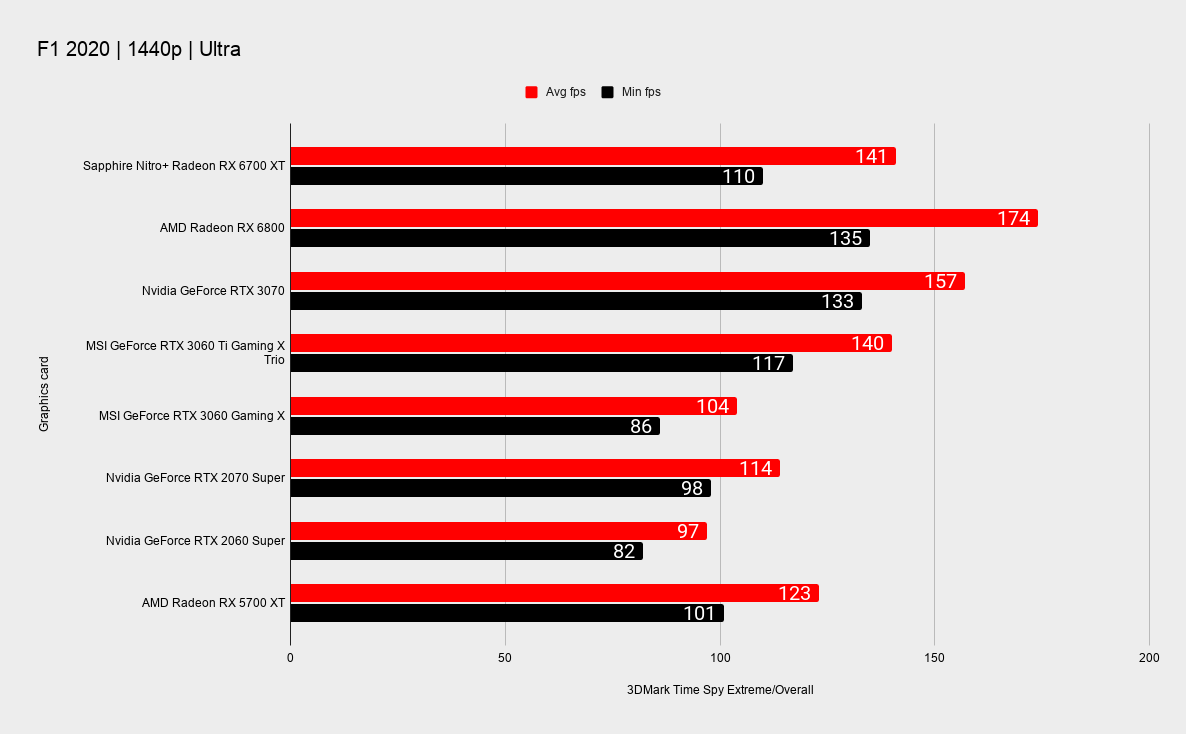
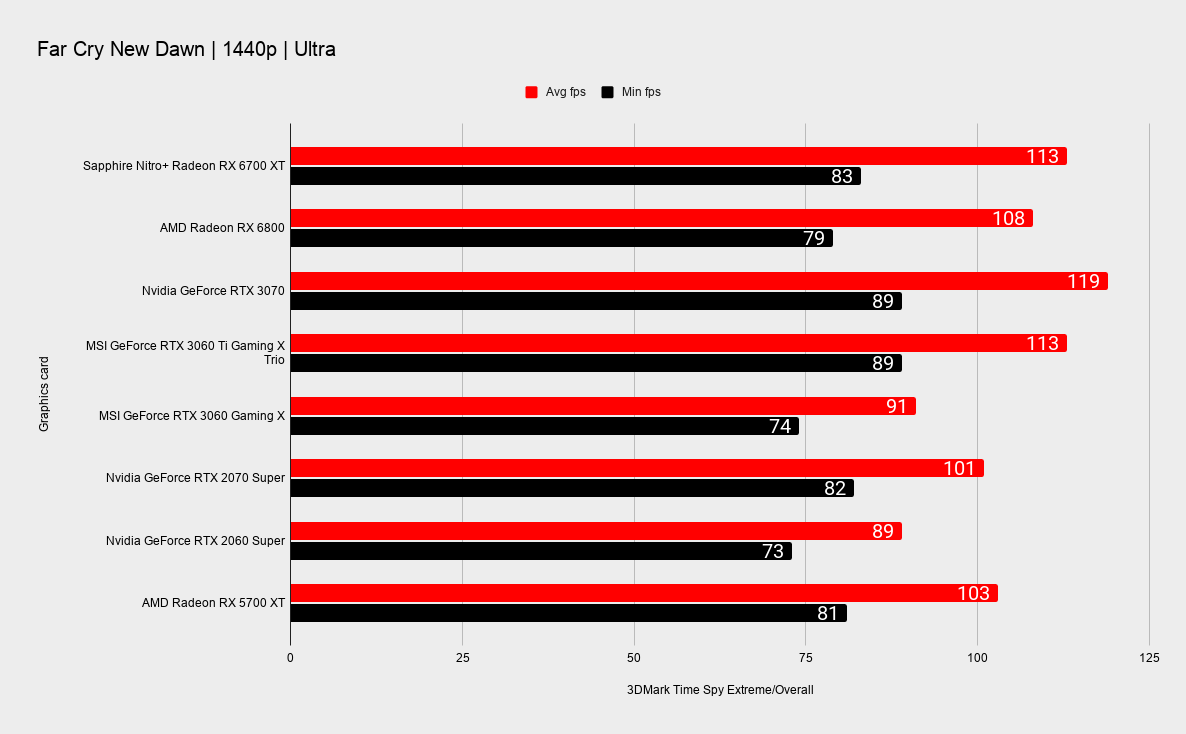
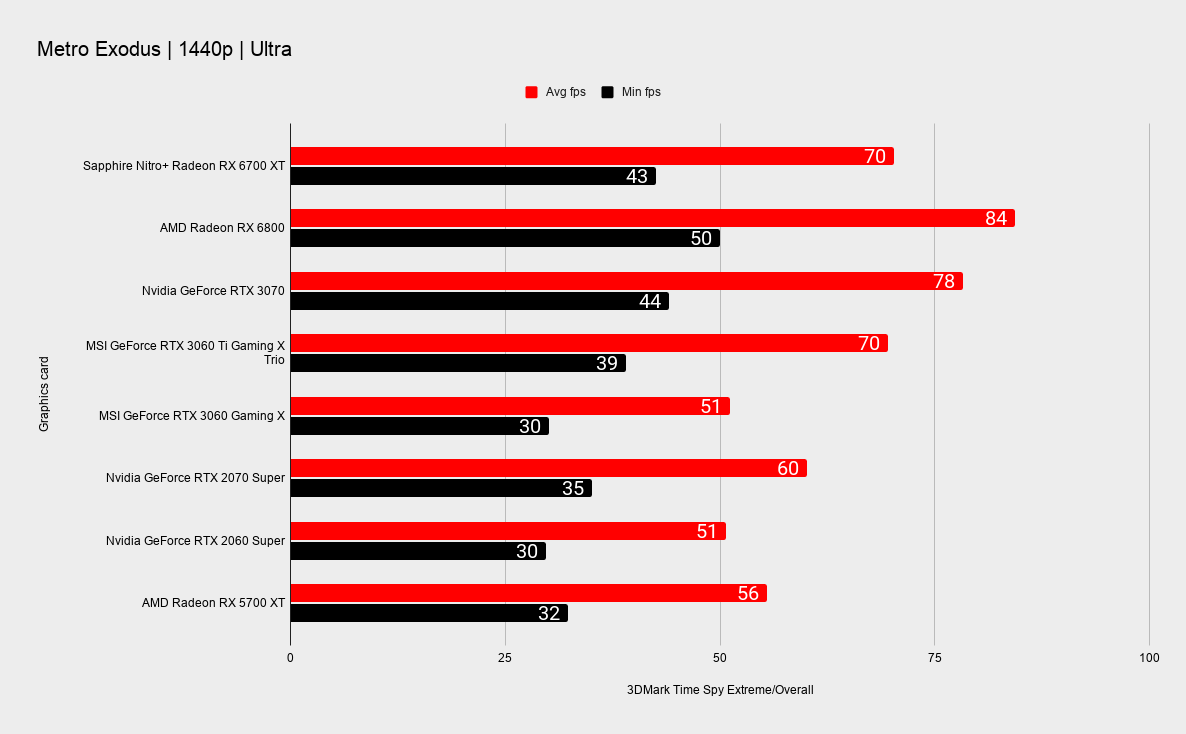
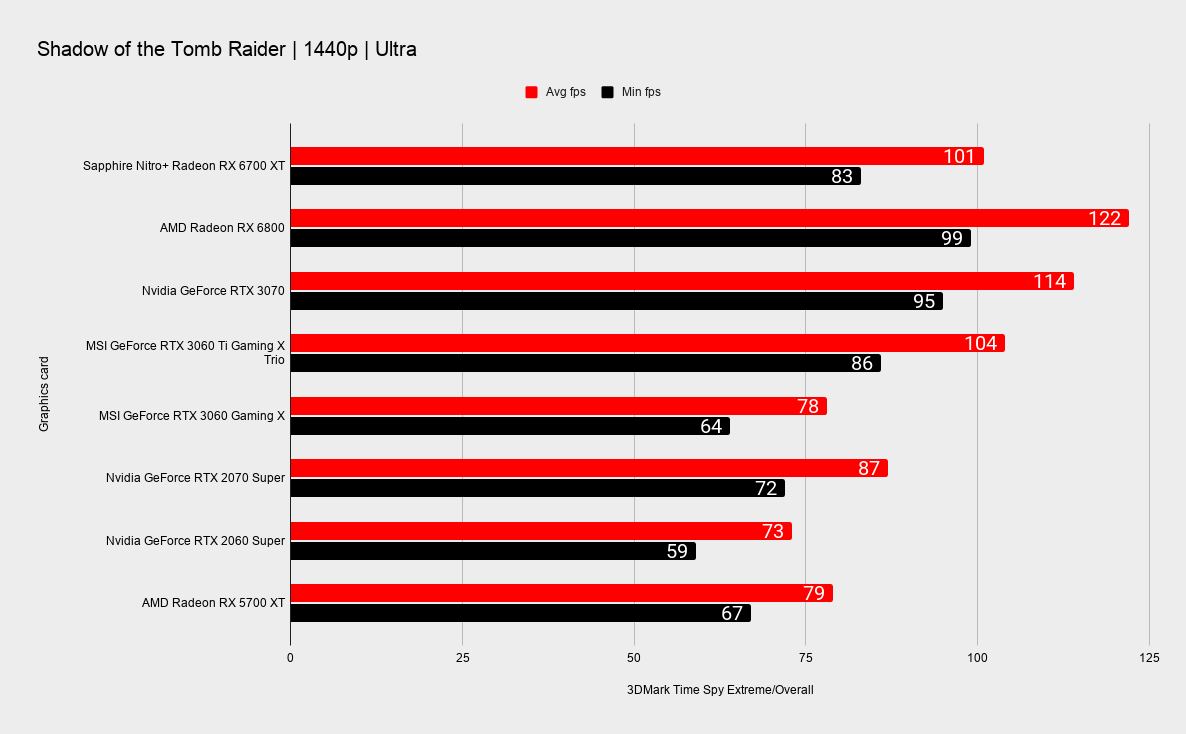
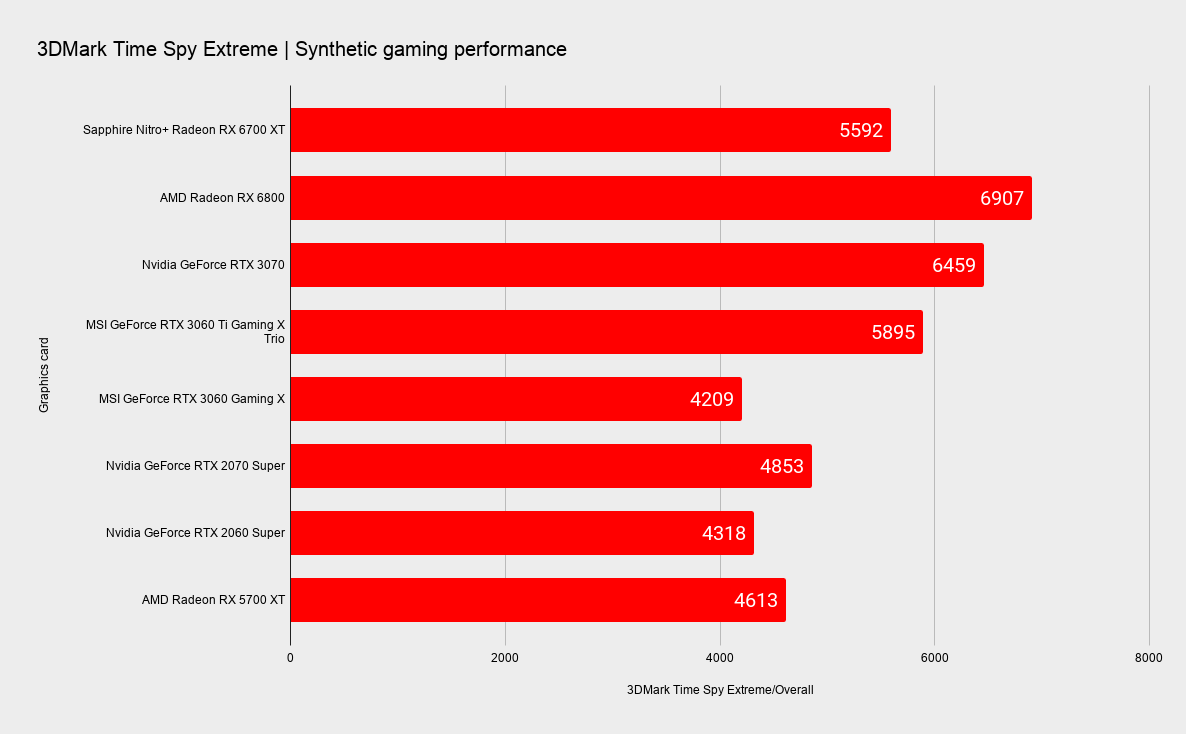
Cooling performance
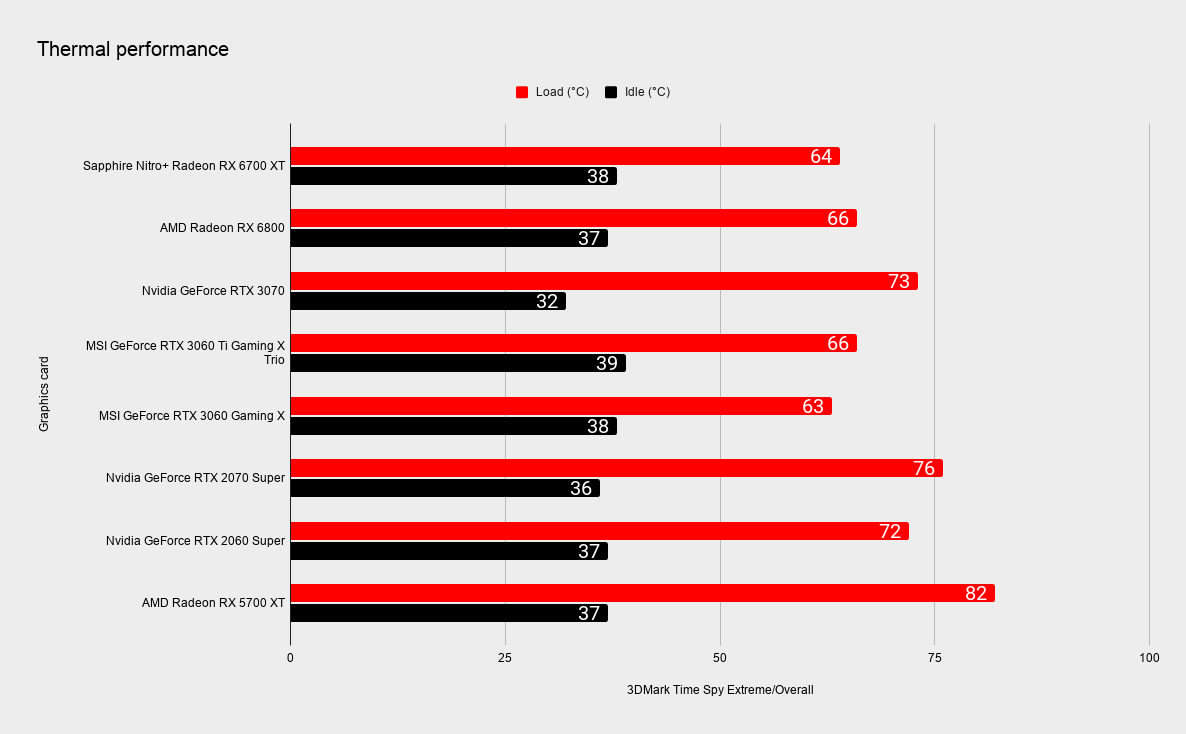
When all is said and done, though, sadly your choice of card will actually come down to what’s in stock the particular second you happen to refresh your favourite retailer’s page. A win by a frame here or a frame there doesn’t matter if you can’t buy one over the other.
Overclocking modern GPUs generally isn’t as beneficial as it was in the past, but free performance is free, so why not give it a go?
Our testing was simple. The power limit was increased to its maximum +15% and the memory to its frustratingly limited maximum of 2,150MHz from the default 2,000MHz. Our sample was happy to run at a set clock of 2,850MHz, with a real average clock of 2,765MHz observed over a 10-minute 3DMark loop.
Real performance was measured using Metro: Exodus at 1440p. The default clocked Nitro+ delivered 70.3 FPS compared to the overclocked card which ran at 74.6 FPS. That’s not an insignificant gain, but not a game changer either.
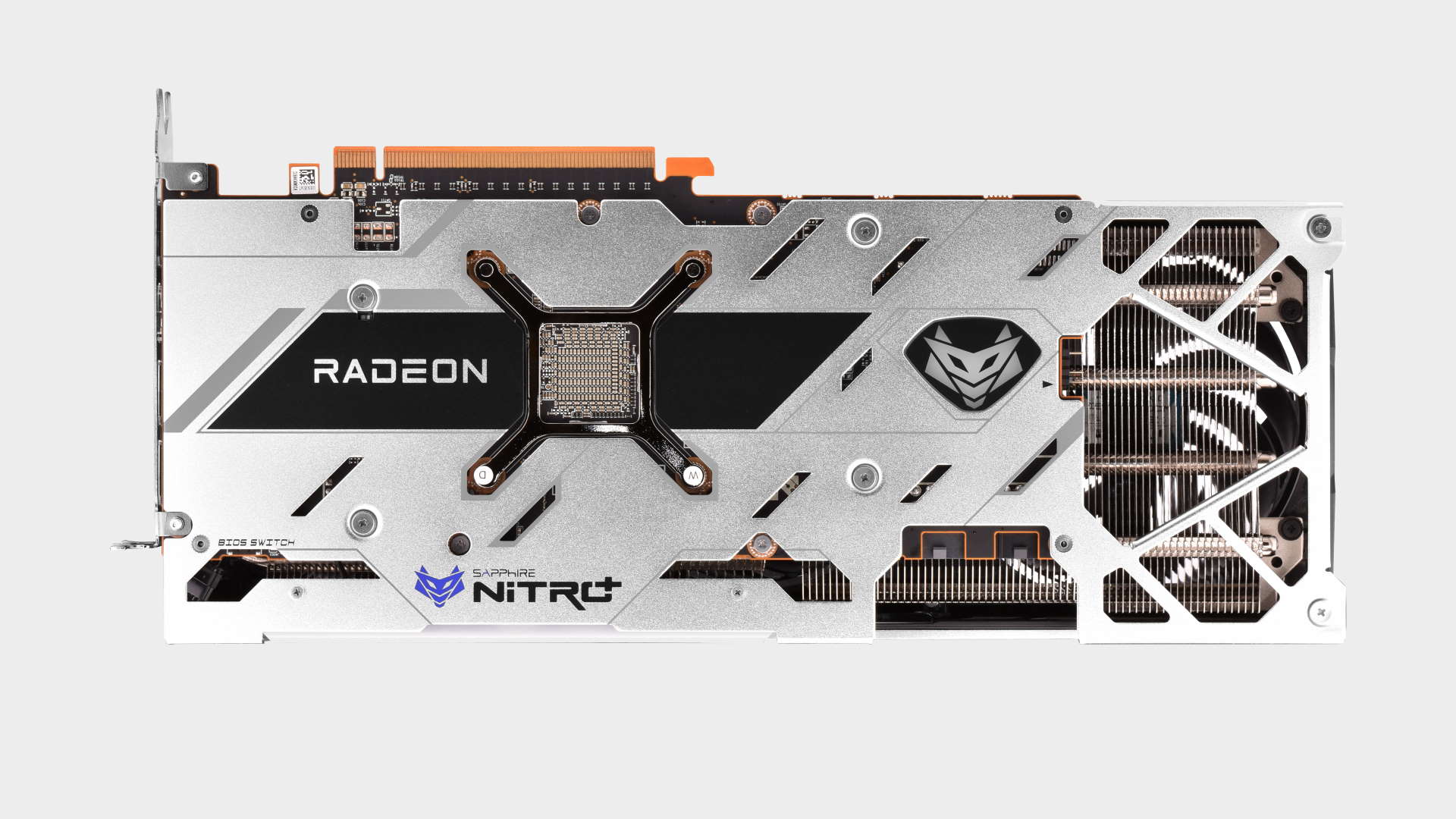
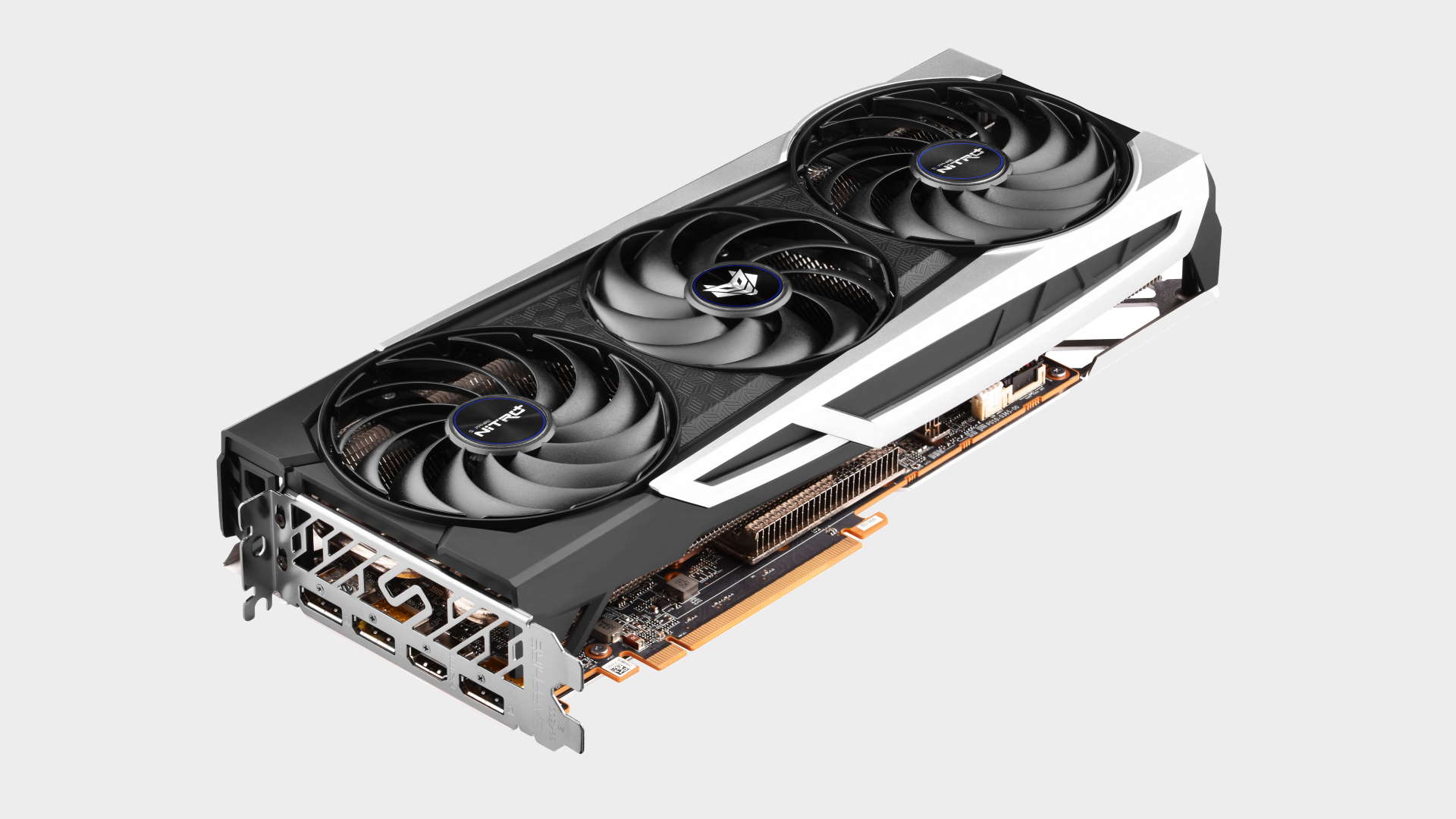
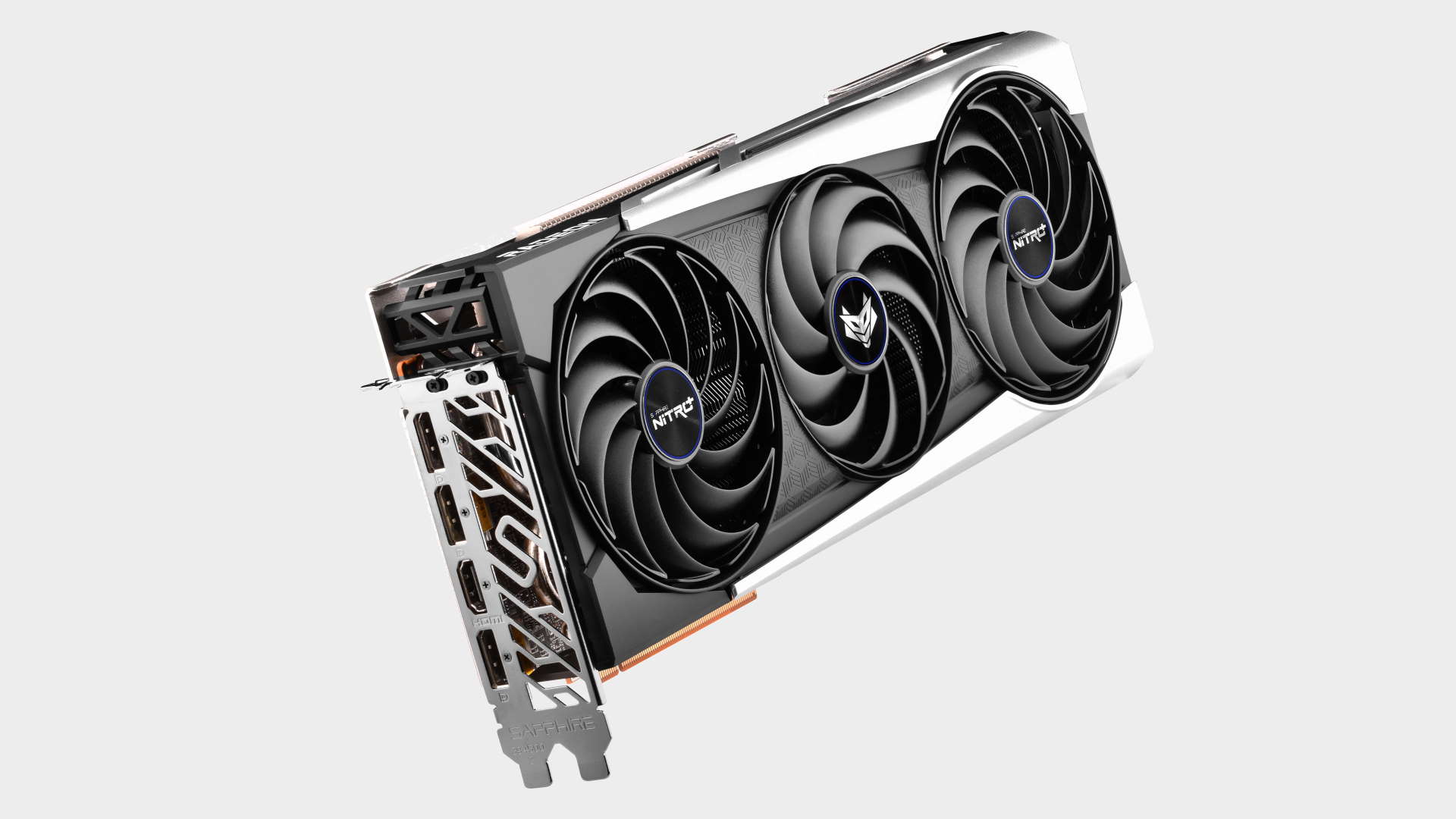
The Sapphire runs cool and quiet, it has 12GB of memory, dual BIOS, a robust PCB and lashes of RGB lighting. It’s a highly capable 1440p card and it competes well with the RTX 3060 Ti, but its main problem is its pricing, even if you were lucky enough to find one at MSRP.
If it was priced closer to the GeForce RTX 3060 it would be a clear winner in the upper mid-range segment. But at a base $579 USD (and good luck finding one at that price), it loses a lot of its shine. The Nitro+ and, for the most part, all other Radeon RX 6700 XT, are actually great little graphics cards as long as you don’t weight RT and super resolution tech that highly.
The Nitro+ itself is very well-built card, but at these prices it’s a difficult sell against the strong RTX 3060 Ti. Let’s see how the market matures in the coming months. The Nitro+ may yet become the compelling mid-range gaming GPU we think it can be, but it's going to need a price cut.
The Sapphire 6700 XT Nitro+ is potentially a mid-range champion, but not at these prices.

Chris' gaming experiences go back to the mid-nineties when he conned his parents into buying an 'educational PC' that was conveniently overpowered to play Doom and Tie Fighter. He developed a love of extreme overclocking that destroyed his savings despite the cheaper hardware on offer via his job at a PC store. To afford more LN2 he began moonlighting as a reviewer for VR-Zone before jumping the fence to work for MSI Australia. Since then, he's gone back to journalism, enthusiastically reviewing the latest and greatest components for PC & Tech Authority, PC Powerplay and currently Australian Personal Computer magazine and PC Gamer. Chris still puts far too many hours into Borderlands 3, always striving to become a more efficient killer.
